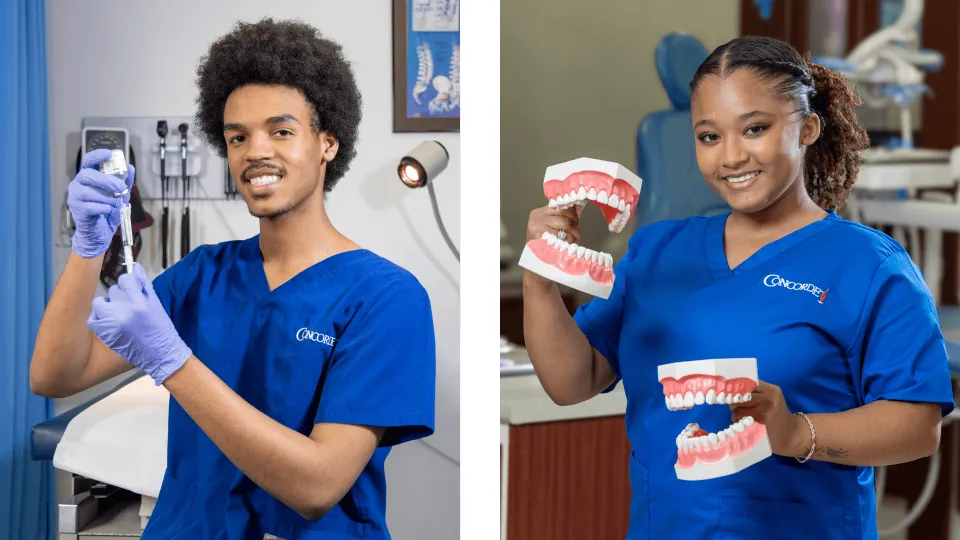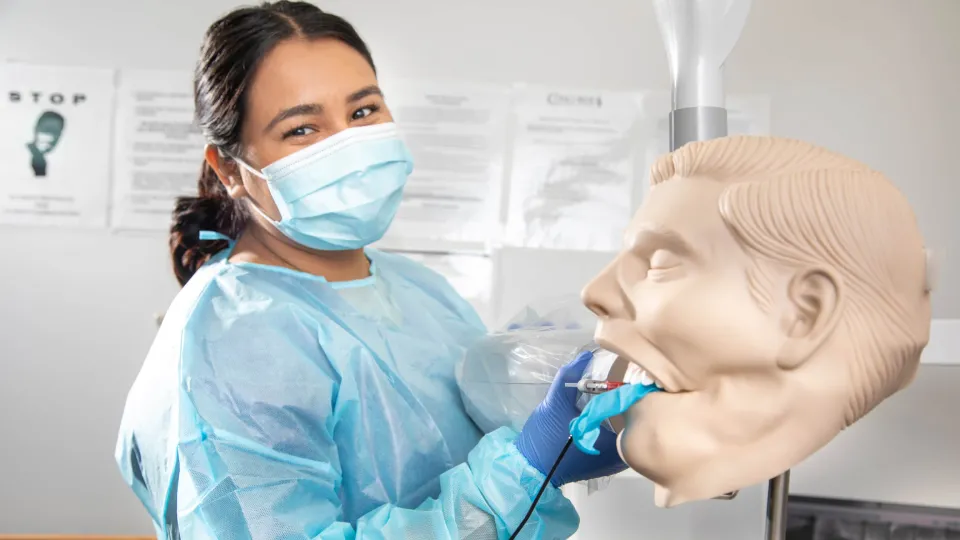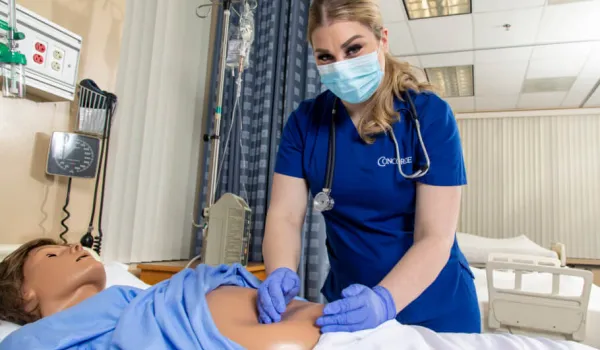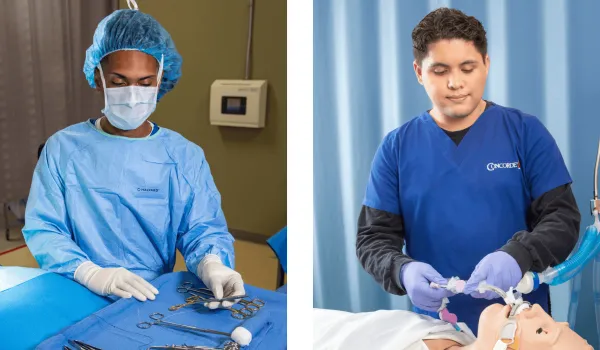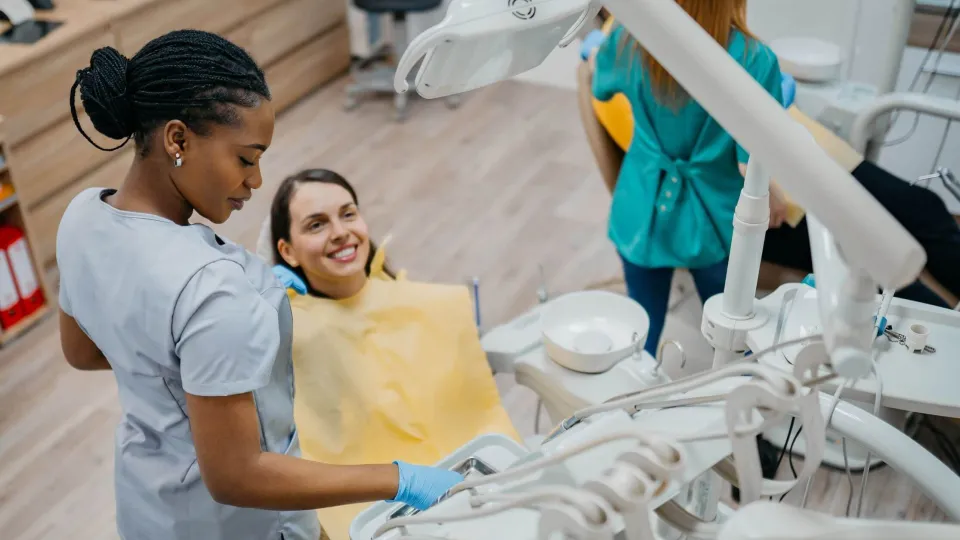
The path of a Registered Dental Assistant opens a fascinating opportunity for dental experts to create a difference. RDAs play an important role as they are integral members of the dental care team who contribute to the quality of dental care via the care of patients and the maintenance of clinical settings. An RDA does much more than help with procedures. They play a crucial role in patient education, treatment preparation, and maintaining hygiene standards, contributing to the overall effectiveness of dental practices.
There's an increasing demand for skilled dental assistants, as the U.S. Bureau of Labor Statistics projects that employment of dental assistants will grow 8% from 2023 to 2033. This growth rate is double the national average growth rate of 4% for all occupations. This growth is aligned with the ongoing expansion of the healthcare industry and a rise in attention to dental health and preventative care. Your training period as an RDA can lead to a career path filled with stability and advancement opportunities through specialist training and certifications.
Step 1: Complete Your High School Education
To start, you must earn your high school or General Education Diploma (GED); this is the first step toward becoming an RDA. Focusing on a good education, including a strong background in science and mathematics, is key since these subjects are ingrained in the technical and analytical process of dental assisting. Some classes prospective RDAs should have include biology and chemistry to provide knowledge that could be applied in more specialized training.
For individuals already planning to pursue a career in dental assisting, you should take advantage of any relevant electives available in high school. Courses such as health sciences, anatomy, or even more labs in chemistry will not only further prepare you for intense dental assisting programs but also boost your resume and readiness for the next steps of education.
Related: Daviana's Story Is for Anyone Who Felt Lost After High School
Step 2: Enroll in a Dental Assisting Training Program
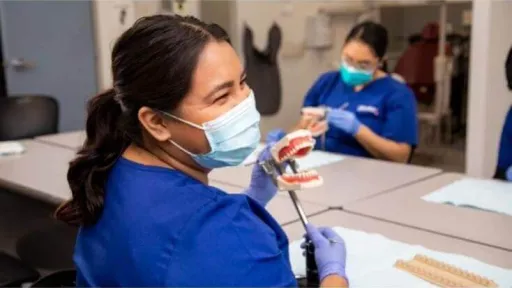
You must enroll in a dental assisting program from an accredited institution to become an RDA. These classes teach the abilities and information essential for work in dentistry. These programs, which are most commonly studied at community colleges, vocational schools, or technical institutes, can be for a certificate, diploma, or associate degree, depending on how in-depth and how long your studies are.
Most of these programs cover various classes, including dental anatomy and physiology, dental materials, radiology, infection control, chairside assisting, and dental office procedures. These courses aim to impart theoretical knowledge along with practical skills.
Step 3: Gain Hands-On Experience
Hands-on experience will be an important component of your pathway to qualifying as an RDA. This stage allows those considering this career path to apply the theoretical knowledge they learned in community-based classrooms to full-on consumer-facing dental office experiences. This practical training takes place through internships, externships, or entry-level positions. These opportunities allow students to apply their knowledge, which helps them polish their dental assisting skills, gain perspective on dental practices, and gain confidence when providing care for actual patients.
Most dental assisting programs require students to complete a mandatory practical experience component before graduating. This real-world exposure is vital because it helps you understand how dental clinics and offices work daily, from patient interactions to complex dental treatments. It allows students to receive hands-on training and experience in a fast-paced environment, providing a wealth of knowledge and practice under the guidance of experienced dental practitioners.
In addition to the education required, some states require RDAs to complete a designated number of work hours to be eligible for certification. This is where practical experience can come in handy to help RDAs understand their role responsibilities and signal whether they will be fully engaged in the position. While some states provide an alternative pathway that allows for relevant on-the-job training to be substituted for formal education, it acknowledges the importance of experiential learning. It permits a person to showcase competency in the dental assisting role in the clinic.
Through these hands-on experiences, future RDAs not only fulfill the necessary regulatory requirements but also gain a solid foundation that enables them to be competent professionals immediately capable of serving any setting involving dental care.
Related: Dental Assistant Duties, Responsibilities and Career Outlook
Step 4: Obtain Certification

Becoming certified as an RDA is essential, allowing the individual to demonstrate a high standard of competency and professionalism in the field. Though the requisites for certification can differ significantly from state to state, the credential known as the Certified Dental Assistant, bestowed by the Dental Assisting National Board, is recognized throughout the entire United States. The certification is a standard for the knowledge and skills required to work efficiently in a dental assisting position.
Before getting the CDA credential, candidates must first meet screening criteria, which usually include completing an accredited dental assisting program and having some work experience. Step two is to take and pass a comprehensive exam testing knowledge involving dental care, safety, and patient management. Certification guarantees that all certified dental assistants have met the same baseline of knowledge and skills necessary to deliver high-quality patient care.
After getting certified, dental assistants are required to participate in continuing education to keep their certification. It's essential that RDAs are up-to-date on the new developments in dental technology and procedures so they can continue to provide patients with the utmost care.
Although certification is not required in every state, it's legally required in thirty-nine states, the District of Columbia, and by some federal government entities such as the Department of Veterans Affairs and the U.S. Air Force. Having a DANB certification may improve the employment rate of the concerned individual and prove that the dental assistant has reached nationally accepted standards in dentistry.
Step 5: Fulfill State-Specific Conditions
The rules and regulations surrounding RDAs vary by state, so potential RDAs must understand those laws and regulations. These regulations, which can significantly differ from state to state, determine the legality and integrity of professional dental assisting practices. To become an RDA, a candidate must graduate from a state-accredited dental assisting program, which the state board must approve of dental examiners. In addition, CPR or radiography certifications may be needed, depending on state requirements.
Common examples of such mandatory checks include background checks for people who work closely with patients to ensure safety and trustworthiness, protect the public, and preserve the integrity of the dental profession. It's important to remain updated and ensure your unfettered compliance with these rules.
Step 6: Pursue Continuing Education and Career Advancement

RDAs need continuing education and professional development because the dental field constantly evolves, with new technologies and techniques emerging regularly. To remain competent in your role and progress your career further in your field, you must keep up with what is happening in your industry and familiarize yourself with best practices. RDAs have several career options to choose from.
Dental assistants may get credentialed to perform more complex duties under a dentist's supervision. Other career paths include dental office management, for which you would need good administrative and relations skills to deal with patients. You could also pursue dental hygiene with more advanced education and someone with the appropriate credentials. Opportunities for dentist jobs in specialty fields such as orthodontics, pediatric dentistry, or oral surgery. Such specializations require additional training and, in many cases, a credential that emphasizes lifelong learning.
Attending and participating in continuing conferences brings RDAs together with fellow healthcare professionals, keeps them aware of trends in the field, and helps provide resources that will help them move forward in their careers. As with other Certified Dental Assistants, they must complete continuing education annually to keep their certification and meet the necessary standards. This dedication to ongoing CPD also enhances the skills and knowledge RDAs possess. This means a huge boost to their careers, making them an asset for patients and employers.
Related: Day in the Life of a Dental Assistant
First Steps in Your Career as a Registered Dental Assistant
Becoming an RDA opens up a promising career in a growing field. Dental assistants can expect a bright job outlook, with a projected growth rate of 8% for 2023 to 2033, faster than average for all occupations. Research dental assisting programs and get to know your state's requirements. Take the first step towards an exciting career that helps patients get better care. Take that step to become an RDA and join a health community. Contact Concorde admissions today for more details about studying to become a Registered Dental Assistant.
U.S. Bureau of Labor Statistics. (2018, April 13). Dental Assistants : Occupational Outlook Handbook: : U.S. Bureau of Labor Statistics. Bls.gov. https://www.bls.gov/ooh/healthcare/dental-assistants.htm
Colato, J., Ice, L., & Laycock, S. (2024, November 7). Industry and occupational employment projections overview and highlights, 2023–33. Bureau of Labor Statistics. https://www.bls.gov/opub/mlr/2024/article/industry-and-occupational-employment-projections-overview-and-highlights-2023-33.htm
Steps to Becoming a Registered Dental Assistant - RDA (AMT). (2025, July 18). MTS. https://www.medicaltechnologyschools.com/dental-assistant/how-to-become-a-registered-dental-assistant
Dental Assistants : Occupational Outlook Handbook: : U.S. Bureau of Labor Statistics. (2019, October 15). Bls.gov. https://www.bls.gov/ooh/healthcare/dental-assistants.htm#tab-4
State Requirements. (n.d.). DANB. https://www.danb.org/state-requirements
Maintain Certification. (n.d.). DANB. https://www.danb.org/certification/maintain-certification
Take The Next Step Towards a Brighter Future
Interested in learning more about our Dental Assistant program?
We have a Concorde representative ready to talk about what matters most to you. Get answers about start dates, curriculum, financial aid, scholarships and more!

